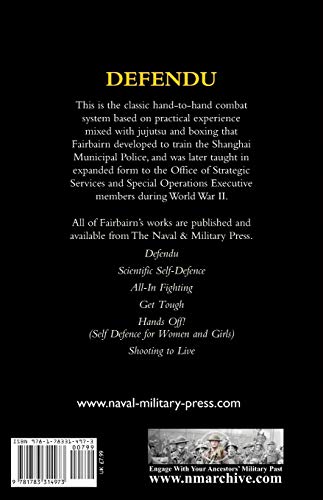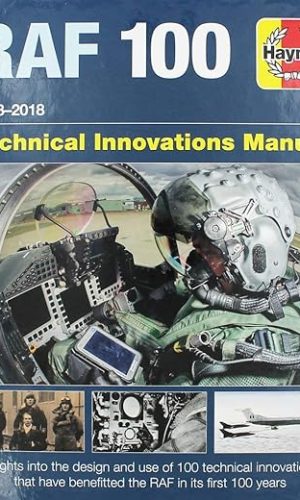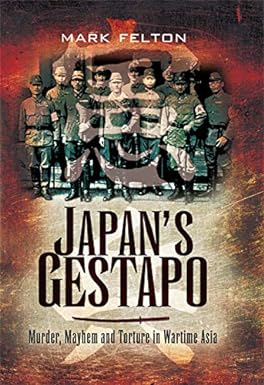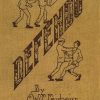DEFENDU: Scientific Self-Defence
£7.60
The Fairbairn’s system was based on his training and knowledge in boxing, wrestling, savate, jujutsu, judo and fights he was involved in during his police work, Fairbairn began to develop his own system of hand to hand combat, initially referring it as Defendu. It was designed to be simple to learn and to provide effective results. Fairbairn published his book, Defendu, in 1926[2] (reprinted as Scientific Self Defence in 1931), illustrating this method and it is here that the term Defendu first appeared This confused early readers of the book, who assumed that the techniques within had been based mainly in the Eastern martial arts that Fairbairn had learned. Thus, in an attempt to highlight the originality of Fairbairn’s material, the term did not appear in the 1931 edition of the book. Fairbairn was called upon by the British to help train and riot control. The original Defendu was oriented towards self-defence and Allied troops in World War II. Fairbairn and others expanded on this system to create the Close Quarters Combat system that was then taught to the troops. This system was built on Defendu, but modified for military applications, rather than policerestraint, while the Close Quarters Combat system concentrated on rapid disabling of an opponent, with potentially lethal force. The militarised version of Defendu is described in the military manual All in fighting 1942, used as a supplement during WW2 CQB-training. This book was later published in a civilian edition, missing the chapters on bayonet-fighting and rifle sighting, under the name Get Tough! How To Win In Hand-To-Hand Fighting. As Taught To The British Commandos And The U.S. Armed Forces.
Read more
Additional information
| Publisher | Naval and Military Press (26 Nov. 2020) |
|---|---|
| Language | English |
| Paperback | 176 pages |
| ISBN-10 | 1783314974 |
| ISBN-13 | 978-1783314973 |
| Dimensions | 16.8 x 1.02 x 26 cm |














by Roger Lankford
This is easy to follow; and the principles also work well for smaller women. Female “e.g. joggers” are at higher risk and this offers basics that work. it requires aggressive application
by Christopher Elliott
A useful read.
by RNE02
Whilst the book may be of interest to those of us with an interest in the history and development of Ju-jitsu in the UK, the techniques are of little or no use in the street.
Whilst they may have been of value in the early part of the previous Century when it was published, they are not now. As a student of Ju-Jitsu I am well versed in the theories and principals of the techniques, I have even practised some of them and am fully aware of their limitations and pitfalls, particularly against a stronger opponent. The strangle defences in particular are laughable.
Whilst the book has some historical interest I would not recommend anyone buy it if they are looking for techniques to learn to use in real street self defence.
by BOY PLONKER
SIMPLE AND TO THE POINT. IT WOULD HAVE BEEN GOOD IF THE BOOK HAD A CHAPTER ON HOW TO DEVELOP A PROPER PREDATOR MINDSET.
A VALUABLE BOOK
by widey
Simple but looks effective
by DrDarke1
An excellent edition of a very rare text. Fairbairn has a no-nonsense and very thorough approach to self defence. Very useful to all potential readers, though I must say that there will be some advantage to anyone with a martial arts background. Recommended.
by sunshine
Great book, with techniques that are still used today
by Sean
Defendu is not a sport or a style, it is common sense, real-world survival fighting against those who would do you harm. No silly belts or gradings to look pretty on safe mats….this is proper sawdust on the floor stuff